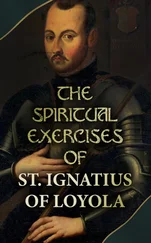Ignatius Donnelly - Antediluvian world
Здесь есть возможность читать онлайн «Ignatius Donnelly - Antediluvian world» весь текст электронной книги совершенно бесплатно (целиком полную версию без сокращений). В некоторых случаях можно слушать аудио, скачать через торрент в формате fb2 и присутствует краткое содержание. Жанр: Старинная литература, на русском языке. Описание произведения, (предисловие) а так же отзывы посетителей доступны на портале библиотеки ЛибКат.
- Название:Antediluvian world
- Автор:
- Жанр:
- Год:неизвестен
- ISBN:нет данных
- Рейтинг книги:5 / 5. Голосов: 1
-
Избранное:Добавить в избранное
- Отзывы:
-
Ваша оценка:
- 100
- 1
- 2
- 3
- 4
- 5
Antediluvian world: краткое содержание, описание и аннотация
Предлагаем к чтению аннотацию, описание, краткое содержание или предисловие (зависит от того, что написал сам автор книги «Antediluvian world»). Если вы не нашли необходимую информацию о книге — напишите в комментариях, мы постараемся отыскать её.
Antediluvian world — читать онлайн бесплатно полную книгу (весь текст) целиком
Ниже представлен текст книги, разбитый по страницам. Система сохранения места последней прочитанной страницы, позволяет с удобством читать онлайн бесплатно книгу «Antediluvian world», без необходимости каждый раз заново искать на чём Вы остановились. Поставьте закладку, и сможете в любой момент перейти на страницу, на которой закончили чтение.
Интервал:
Закладка:
One may well pause, after reading this catalogue, and ask himself, wherein do these peoples differ? It is absurd to pretend that all these similarities could have been the result of accidental coincidences.
These two peoples, separated by the great ocean, were baptized alike in infancy with blessed water; they prayed alike to the gods; they worshipped together the sun, moon, and stars; they confessed their sins alike; they were instructed alike by an established priesthood; they were married in the same way and by the joining of hands; they armed themselves with the same weapons; when children came, the man, on both continents, went to bed and left his wife to do the honors of the household; they tattooed and painted themselves in the same fashion; they became intoxicated on kindred drinks; their dresses were alike; they cooked in the same manner; they used the same metals; they employed the same exorcisms and bleedings for disease; they believed alike in ghosts, demons, and fairies; they listened to the same stories; they played the same games; they used the same musical instruments; they danced the same dances, and when they died they were embalmed in the same way and buried sitting; while over them were erected, on both continents, the same mounds, pyramids, obelisks, and temples. And yet we are asked to believe that there was no relationship between them, and that they had never had any ante-Columbian intercourse with each other.
If our knowledge of Atlantis was more thorough, it would no doubt appear that, in every instance wherein the people of Europe accord with the people of America, they were both in accord with the people of Atlantis; and that Atlantis was the common centre from which both peoples derived their arts, sciences, customs, and opinions. It will be seen that in every case where Plato gives us any information in this respect as to Atlantis, we find this agreement to exist. It existed in architecture, sculpture, navigation, engraving, writing, an established priesthood, the mode of worship, agriculture, the construction of roads and canals; and it is reasonable to suppose that the, same correspondence extended down to all the minor details treated of in this chapter.
CHAPTER III.
AMERICAN EVIDENCES OF INTERCOURSE WITH EUROPE OR ATLANTIS.
1. ON the monuments of Central America there are representations of bearded men. How could the beardless American Indians have imagined a bearded race?
2. All the traditions of the civilized races of Central America point to an Eastern origin.
The leader and civilizer of the Nahua family was Quetzalcoatl. This is the legend respecting him:
“From the distant East, from the fabulous Hue Hue Tlapalan, this mysterious person came to Tula, and became the patron god and high-priest of the ancestors of the Toltecs. He is described as having been a white man, with strong formation of body, broad forehead, large eyes, and flowing beard. He wore a mitre on his head, and was dressed in a long white robe reaching to his feet, and covered with red crosses. In his hand he held a sickle. His habits were ascetic, he never married, was most chaste and pure in life, and is said to have endured penance in a neighboring mountain, not for its effects upon himself, but as a warning to others. He condemned sacrifices, except of fruits and flowers, and was known as the god of peace; for, when addressed on the subject of war, he is reported to have stopped his ears with his fingers.” (“North Amer. of Antiq.,” p. 268.) “He was skilled in many arts: he invented” (that is, imported) “gem-cutting and metal-casting; he originated letters, and invented the Mexican calendar. He finally returned to the land in the East from which he came: leaving the American coast at Vera Cruz, he embarked in a canoe made of serpent-skins, and ‘sailed away into the east.’” (Ibid., p. 271.) Dr. Le Plongeon says of the columns at Chichen: “The base is formed by the head of Cukulcan, the shaft of the body of the serpent, with its feathers beautifully carved to the very chapiter.
On the chapiters of the columns that support the portico, at the entrance of the castle in Chichen Itza, may be seen the carved figures of long-bearded men, with upraised hands, in the act of worshipping sacred trees. They forcibly recall to mind the same worship in Assyria.”
In the accompanying cut of an ancient vase from Tula, we see a bearded figure grasping a beardless man.
In the cut given below we see a face that might be duplicated among the old men of any part of Europe.
The Cakchiquel MS. says: “Four persons came from Tulan, from the direction of the rising sun—that is one Tulan. There is another Tulan in Xibalbay, and another where the sun sets, and it is there that we came; and in the direction of the setting sun there is another, where is the god; so that there are four Tulans; and it is where the sun sets that we came to Tulan, from the other side of the sea, where this Tulan is; and it is there that we were conceived and begotten by our mothers and fathers.”
That is to say, the birthplace of the race was in the East, across the sea, at a place called Tulan and when they emigrated they called their first stopping-place on the American continent Tulan also; and besides this there were two other Tulans.
“Of the Nahua predecessors of the Toltecs in Mexico the Olmecs and Xicalaucans were the most important. They were the forerunners of the great races that followed. According to Ixtlilxochitl, these people-which are conceded to be one occupied the world in the third age; they came from the East in ships or barks to the land of Potonchan, which they commenced to populate.”
3. The Abbe Brasseur de Bourbourg, in one of the notes of the Introduction of the “Popol Vuh,” presents a very remarkable analogy between the kingdom of Xibalba, described in that work, and Atlantis. He says:
“Both countries are magnificent, exceedingly fertile, and abound in the precious metals. The empire of Atlantis was divided into ten kingdoms, governed by five couples of twin sons of Poseidon, the eldest being supreme over the others; and the ten constituted a tribunal that managed the affairs of the empire. Their descendants governed after them. The ten kings of Xibalba, who reigned (in couples) under Hun-Came and Vukub-Came (and who together constituted a grand council of the kingdom), certainly furnish curious points of comparison. And there is wanting neither a catastrophe—for Xibalba had a terrific inundation—nor the name of Atlas, of which the etymology is found only in the Nahuatl tongue: it comes from atl, water; and we know that a city of Atlan (near the water) still existed on the Atlantic side of the Isthmus of Panama at the time of the Conquest.”
“In Yucatan the traditions all point to an Eastern and foreign origin for the race. The early writers report that the natives believe their ancestors to have crossed the sea by a passage which was opened for them.” (Landa’s “Relacion,” p. 28.)
“It was also believed that part of the population came into the country from the West. Lizana says that the smaller portion, ‘the little descent,’ came from the East, while the greater portion, ‘the great descent,’ came from the West. Cogolluda considers the Eastern colony to have been the larger. . . . The culture-hero Zamna, the author of all civilization in Yucatan, is described as the teacher of letters, and the leader of the people from their ancient home. . . . He was the leader of a colony from the East.” (“North Amer. of Antiq.,” p. 229.) The ancient Mexican legends say that, after the Flood, Coxcox and his wife, after wandering one hundred and four years, landed at Antlan, and passed thence to Capultepec, and thence to Culhuacan, and lastly to Mexico.
Coming from Atlantis, they named their first landing-place Antlan.
Читать дальшеИнтервал:
Закладка:
Похожие книги на «Antediluvian world»
Представляем Вашему вниманию похожие книги на «Antediluvian world» списком для выбора. Мы отобрали схожую по названию и смыслу литературу в надежде предоставить читателям больше вариантов отыскать новые, интересные, ещё непрочитанные произведения.
Обсуждение, отзывы о книге «Antediluvian world» и просто собственные мнения читателей. Оставьте ваши комментарии, напишите, что Вы думаете о произведении, его смысле или главных героях. Укажите что конкретно понравилось, а что нет, и почему Вы так считаете.












